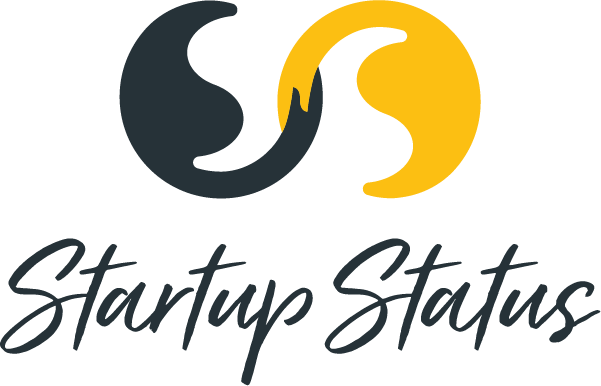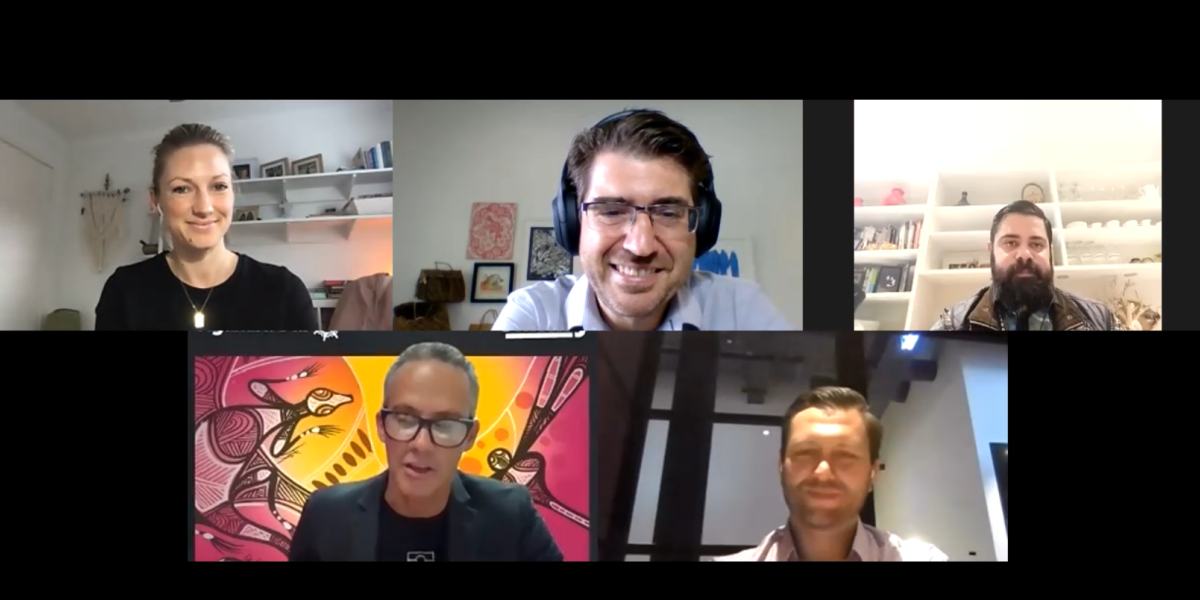A recent panel discussion considered the current state of the Indigenous entrepreneur ecosystem in Australia. The panel was inspired by upcoming Dream Venture Masterclasses that equip Indigenous people in Australia with the connections, capabilities and access to capital that they need to become investor-ready or ready to invest. The conversation was framed around questions including:
- What is the current state of the Indigenous entrepreneur ecosystem and capital raising?
- What are current challenges as well as opportunities unique to Australia?
- What is next for the sector within Australia and against a global context?
The panellists included:
- Leslie Delaforce – Indigenous Entrepreneurship Director, Minderoo Foundation
- Liam Ridgeway – Co-founder NGNY – Ngakkan Nyaagu / Co-founder Indigitek / Director, IndigiGig
- Lauren Capelin – Principal, Startmate
- Gavin Mate -Head of Aboriginal Strategy & Engagement Uniting / Director Worthwhile Ventures Ltd
You can watch a recap of the panel session and read some further thoughts below.
Acknowledging others and the current Australian entrepreneur ecosystem context
The panel opened with an acknowledgment of the traditional custodians of the land. Two other acknowledgements help to frame the conversation.
First, there is an acknowledgement that this conversation is just one in a tepstry of emerging and established programs, organisations, and leaders supporting First Nation entrepreneurs. While the mapping support programs is ongoing and far from exhaustive, some examples of contemporary leaders in the Indigenous entrepreneurship ecosystem include Dean Foley with Baramoral in Victoria, EJ Garret promoting Indigenous activities with Buying Black, Kieran Shirey with Logit Asset Management who is also developing an innovative way for organisations to track Indigenous engagement, Tanya Egerton with Circuulanation supporting Indigenous entrepreneurs in the Northern Territory, and Petina Tieman with award-winning Indigenous support programs at iiHub in Cairns. These are just a few examples of hundreds of others across Australia whose programs and activities are driving systemic change in Australia.
Second, we acknowledge the current evolutionary stage of the Australian innovation ecosystem. The Federal Government’s 2015 $1.1 billion innovation program combined with related state and local investments contributed to an explosion of innovation hubs, incubators, spaces, programs and other support measures for innovation and entrepreneurship. These initiatives were largely ‘all things for all people’, providing support for all entrepreneurs which in reality provided opportunities for those who were already in close physical and social proximity through geographic location and network access.
There is now an increased awareness of the need to support communities on the periphery that require additional support and representation based on geographic region, cultural heritage, gender, or age. This awareness has resulted in private market programs and government policy dedicated to communities including female entrepreneurs, youth, remote and regional communities, the disabiliuty sector, and Indigenous. These programs are often led by those who participated in previous programs who then create solution to address gaps.
This evolution was described by panalist Leslie Delaforce who reflected on key leaders who supported the early ecosystem development in 2016. In describing the ecosystem journey, Leslie reflected that:
“The current situation is driven by some government policy and corporate engagement but also really led at the grassroots level by Indigenous entrepreneurs across the country resulting in the exponetial growth we are now seeing”.
Gavine Mate demonstrated this story of grassroots leadership in his narrative about how his experience in a University of Technology Sydney business school program that took Aboriginal professionals through the startup journey contributed to the development of Worthwhile Ventures. These dedicated programs are necessary given the situation not just in Australia but globally that:
We do not design for the minority and invite the majority to find their own way to fit in. This is an all too common storyline.
Liam Ridgeway similarly shared how his story about connecting with a colleague at a conference in the US over gaps in digital and technology services for Indigenous businesses. Back in 2011, he did not identify as being an Indigenous business but did talk about being an Indigenous person in that business. In considering the changes and evolution over time, Liam reflects that seeing what is going on through the Indigenous business sector at the moment,
There is a great opportunity, narrative, and amount of support that allows us to go on this journey where we are learning together as Indigenous and non-Indigenous people to look at how we collaborate and invest not just money but also time and support into this ecosystem.
Lauren Capelin shared Liam’s perspective, noting we are in a “critical time bringing streams of conversation together”. Lauren described Startmate’s focus on finding the ‘most ambitious founders’, while also identifying that there is a lack of Indigenous representation in Startmate cohorts. This awareness prompts a focus on ‘equitable design work’, and important questions such as:
What do we need to do to design our programs, community, and outreach to be equitable and accessible for anyone who identifies as an ambitious entrepreneur?
This question leads to program changes including increased representation across the Startmate ecosystem, such as including Indigenous mentors and other providers to support Startmate cohorts.
What is next?
The conversation then shifted to what is next for support for Indegenous entrepreneurs in Australia. I was keen to hear more about the Dream Venture Masterclasses, as they are globally unique in their focus to not just get venture capital to Indigenous, but also to develop capacity and capability in Indigenous investors.
In sharing about the program, Leslie reflected on seeing increased collaboration of Indigenous programs with established venture capitalists. This is encouraging given his personal journey. Inspired from a program at the Melbourne Business School, Leslie left a secure government job with no income for 12 months and a wife six months pregnant to navigating choppy waters. Leslie reflected on not understanding and making mistakes in his learning process to hi first raise through angels and eventually securing capital through Sydney. These challenges in raising capital he hears from other on the journey as they ask: “Who can I talk to?” and “How can I get advice?”
The experience provides a backstory to the focus of the Minderoo Generation One Dream Ventire Master Classes which considers how to support more Aboriginal entrepreneurs to get into the entrepreneur and investment space. The Dream Ventire Master Classes have the capital behind the program to do it at scale as they focus on how to:
- Support prospective Indegenous angel investors;
- Help Indigenous entreprenes become investor ready, and
- Equip Indegenous Australians to become investor ready or ready to invest.
Lauren shared the need for these goals in her description of the venture capital scene in Australia. The conversation, however, needs to start with a caveat that applies to any company considering investment in that not all businesses are right for venture capital. While many would consider investment to be a great thing, it may not be the right thing for the business at that time.
With that in mind, Lauren’s big question about from venture capital stems from an awareness of the many noted problems with venture capital. In particular, the evolution towards centralised power, control, privilege and wealth that goes hand in hand with venture capital:
While the inequality looks better in Australia than other markets, it is still extremely rare to have stakeholders at the venture capital table that come from First Nations investors.
This led to a powerful insight by Lauren. When considering the investments related to Startmate programs, Lauren mentioned feeling less comfortable knowing that none of the equity or carry is going to First Nations investors.
As I listen to the wisdom from the panel, the conversation reinforced the need for programs that develop representation in investors. Despite good intent, traditional investment programs designed to support periphery communities could otherwise end up extracting value from those communities and reinforced the centralisation of wealth and inequality.
I was appreciative of Gavin’s follow-up comments which applied strategy to the way forward. Gavine reflected on the need for shared values across all stakeholders to acknowledge many Indigenous perspectives that come from a place of relationship and purpose and impact thinking. Many projects Gavin is involved in with Worthwhile Ventures incorporate a reciprocity to community and recognition of historical capital which inherently includes a notion of paying back. This leads to questions about how we form more community, relationships, and safety in networks to expand our thinking on what a return on investment looks like.
Let’s find a way we can find a greater disclosure of identity, values, and interests, and have intermediaries who can, without any agenda, find connections and bring collaborations in a neutral and enabling way.
Liam picked up on the notion of developing shared values, point out that it is a learning journey that needs to respect nuances on both sides and acknowledge the history of what the past ecosystem looks like. The reality is that the Indigenous community has not been afforded the same amount of privilege. While the historical lack of access is not the only conversation, it needs to be an acknowledged part of the conversation in the shared learning journey.
In considering next steps, Liam posed questions that can help with that conversation: What is value on both sides of the fence? Is the value that an investor sets the actual value? Or do we get to collaborate, talk about, and learn from each other around the differences and similarities, and co-existance of values? How do we put a weighting on Indigenous perspectives in the way you would look at the value of a particular investment?
Changing the game
We continued with further discussion and questions from participants. But I appreciate one of the points made that this panel is a starting point to having the dialogue in an evolution towards how we learn and grow.
The constructive and open conversation from the panellists acknowledged the challenges and identified the evolutionary nature of the Indigenous entrepreneur ecosystem in Australia. While emerging, the Indigenous entrepreneur ecosystem was described as a state of exponential and rapid growth. This can be seen as a natural expansion as leaders identify and address gaps.
The conversation reminded me of three options to consider in any change process. The first is we can consider how we play the game. In terms of the ecosystem, this involves participating in established programs, knowing the right people, making the right connections to get access to established capital.
A second option is to change the rules. This can include creating programs to develop Indigenous investors, establish dedicated Indigenous support networks and services, and create policy and funding dedicated to Indigenous entrepreneur programs.
Both of these options are good and a natural expansion of the complex adaptive system that is the Australian entrepreneur ecosystem. But the main question on my mind is how we change the game. Some of the panelists comments hint at what this might look like – to develop a shared value system that acknowledges and attributes increased commercial value to what is valued in the periphery.
What would it look like to incorporate Indigenous values across non-Indigenous investment decisions? What if fund performance was measured on overall impact, regardless of the nature of the cohort? What if accessibility and representation was integrated across all aspects of a national entrepreneur ecosystem?
As I reflect on the panel, I am reminded that change often starts with questions more than solutions. I am also more confident now after the panel that answers to game changing questions are emerging across Australia.
This session is part of an ongoing conversation about the state of the Australian innovation ecosystem. Much gratitude to the panelists and participants, as well as those who have come before who allowed us to have this conversation at this point in time.
I welcome your feedback and thoughts as we continue the conversation, as well as opportunities to collaborate on opportunities for meaningful impact.

